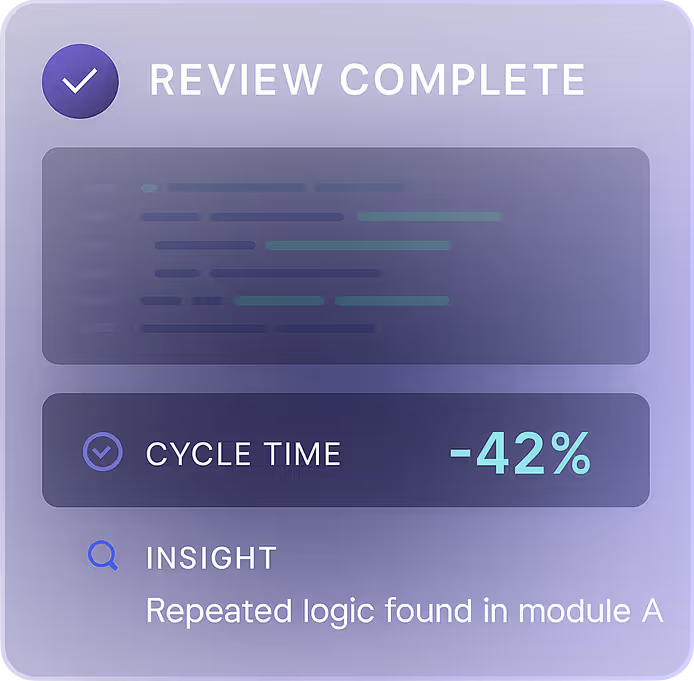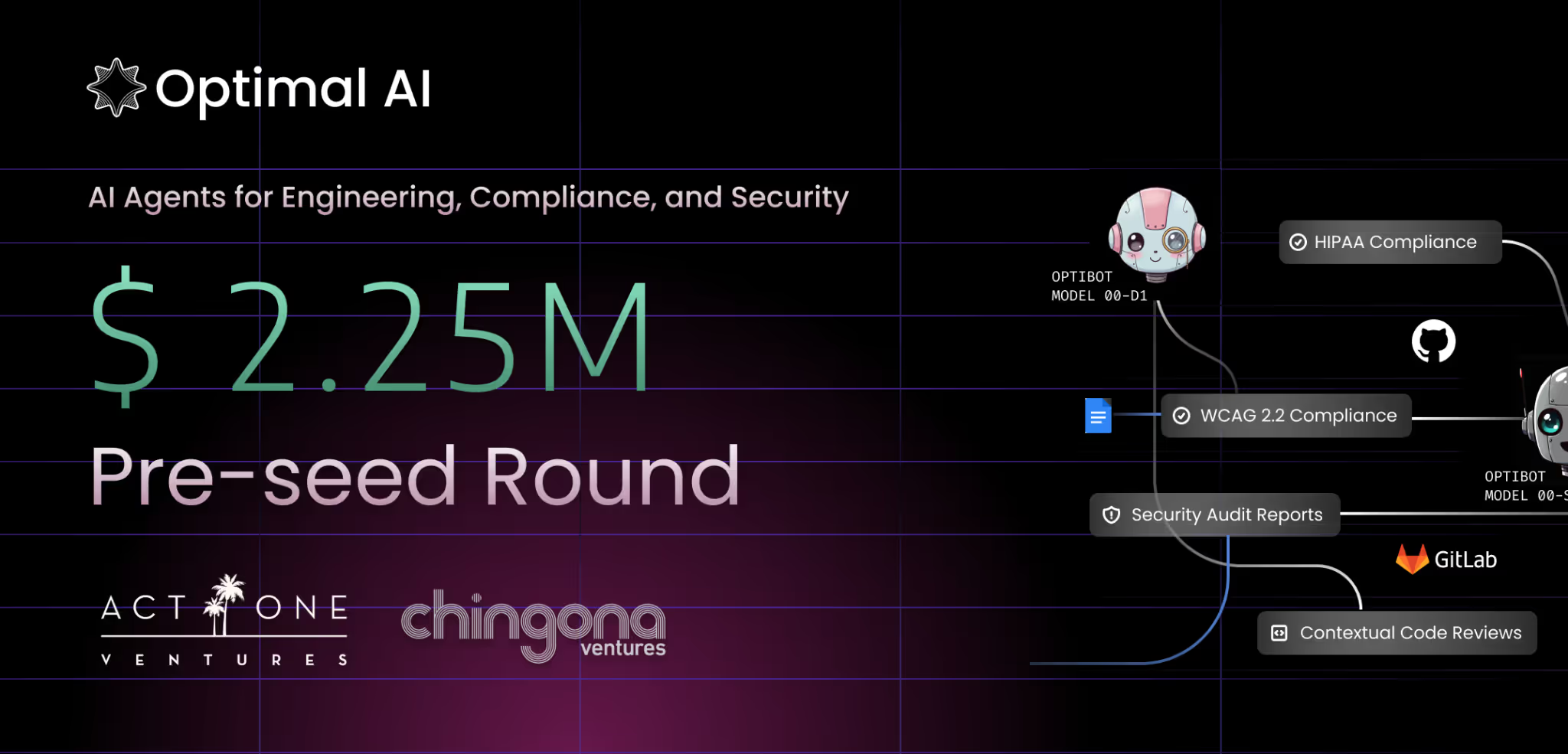The Rise of Vibe Coding: How to Build Faster Without Sacrificing Code Quality
Vibe coding is a new AI-driven way to build software by describing what you want in plain language instead of writing every line of code. It makes development faster, more intuitive, and accessible to anyone—but also introduces new risks around quality, security, and learning.
.avif)
Table of Content
Vibe coding is a new way to build software using AI. Instead of writing every line yourself, you describe what you want in plain language (“Build a dashboard with dark mode”), and the AI generates the code. It’s fast, intuitive, and accessible—but it also raises new risks around code quality, security, and team learning.
This guide explains what vibe coding is, how it works, and how engineering leaders and founders can use it responsibly—with the help of Optibot, Optimal AI’s code review agent.
What is Vibe Coding?
Coined by Andrej Karpathy, vibe coding is part of “Software 3.0”, where the programming interface shifts from typing code to writing prompts.
In this world, developers aren’t just writing functions—they’re orchestrators and reviewers, guiding AI to build working apps. Vibe coding tools remove the friction of setup, boilerplate, and scaffolding, letting you jump straight into building with words.
Definition:
Vibe coding is an AI-powered development workflow where natural language prompts are used to generate code, test it, and refine it—making software creation faster but requiring new safeguards for quality and security.
How the Vibe Coding Workflow Works
A typical vibe coding workflow follows a simple prompt, test, and refine loop:
- Prompt: Describe what you want to build.
Example: “Create a fitness dashboard with charts and daily progress tracking.” - Generate: AI produces frontend, backend, and database logic.
- Test: Deploy locally or in the cloud to check functionality.
- Refine: Give feedback like “Add mobile optimization” or “Fix login flow.”
- This loop makes iteration fast—but the more code AI writes, the more critical reviews become.
This process lets you iteratively guide the app into its final form. But the more code an AI writes, the more crucial it becomes to review and validate it. This is where a tool like Optibot becomes essential.
See also: How Optimal AI accelerates PR reviews.
Why Vibe Coding Matters for Founders and Startups
Vibe coding democratizes software development:
- Non-technical founders can turn ideas into MVPs without hiring large dev teams.
- Engineers can skip boilerplate and focus on strategy or UX.
- Startups can cut prototyping time and cost, shipping faster with smaller teams.
But here’s the catch: Rapid code generation also creates a major problem: hidden bugs, messy architecture, and security risks. Optibot, Optimal AI’s flagship code review agent, helps you solve this problem.
Unlike tools that just summarize pull requests, Optibot analyzes, reasons, and flags issues others might miss because it learns your repository’s context and follows your specific rules.
In real-world tests, 4 out of 5 engineering teams preferred Optibot over GitHub Copilot for pull request reviews, citing its higher specificity and accuracy.
The Hidden Risks of Vibe Coding
While vibe coding is incredibly powerful, it introduces several major concerns:
- Technical debt: AI-written code can look fine but create long-term maintenance issues (IEEE on software debt).
- Security blind spots: Subtle vulnerabilities often go unnoticed (OWASP Top 10).
- Learning gaps: Junior developers risk skipping core fundamentals.
Ignoring these risks leads to unstable products, higher long-term costs, and compliance failures.
Optibot vs Other Code Review Tools
To make vibe coding sustainable, you need automated, context-aware reviews.
FeatureOptibotGitHub CopilotStatic Analysis Tools (SonarQube)Review DepthAnalyzes repo context, architecture, rulesSummarizes PRsSyntax-level onlySecurity ChecksDetects vulnerabilities pre-mergeRequires promptsLimitedAutomationFixes failing CI workflows with new PRsNoNoTeam Preference4/5 teams prefer Optibot in testsMixedLimited
Takeaway: Copilot helps generate code. Optibot helps you trust it.
How Optibot Supports Vibe Coding
Optibot is designed to address these issues by providing:
- Context-aware reviews: Understands repo history, not just single PRs.
- Security-first checks: Flags subtle vulnerabilities early.
- Live Q&A: Ask “What’s the risk here?” directly in GitHub comments.
- CI/CD integration: Auto-opens pull requests with fixes for failing workflows.
- Learn more: Engineering Intelligence Platform overview.
With Optibot, you no longer have to play code detective. The bot does the heavy review work for you, which is especially helpful when code is being generated at high speed by AI.
Best Practices for Responsible Vibe Coding
To leverage vibe coding effectively without breaking things, follow these smart practices:
- Never skip code reviews. Use an automated tool like Optibot to catch what the AI might have missed.
- Integrate security checks to ensure your code is safe. Combining static analysis with a review agent is the best way to do this.
- Talk to your AI. Use live interaction features to ask questions about pull requests or logic before merging.
- Use vibe coding for scaffolding, not for mission-critical logic—at least not yet.
- Combine tools. Use code generation tools like GPT alongside quality agents like Optibot for a more comprehensive workflow.
- Keep developers learning: Encourage junior devs to review AI-generated code to build understanding.
FAQs
Q: Who coined the term “vibe coding”?
A: Andrej Karpathy popularized the term in 2023 to describe prompt-driven, conversational coding.
Q: What are the risks of vibe coding?
A: Hidden bugs, technical debt, security vulnerabilities, and reduced learning for new developers (OWASP Top 10).
Q: Can AI replace code reviews?
A: No. AI can generate code, but human judgment and context-aware review agents are critical for safety and maintainability.
Q: How does Optibot compare to Copilot?
A: GitHub Copilot helps generate code. Optibot reviews it—catching issues Copilot misses and ensuring compliance.
The Takeaway
Vibe coding is the new way of engineering. But speed without safeguards creates risk. To make it work for startups and engineering leaders, you need judgment-powered reviews that scale as fast as AI can generate.
👉 Ready to bring quality and security into your vibe coding workflow? Book a demo with Optibot today.

Ship Faster. Review Smarter. See Everything
Finds issues Copilot misse
Tracks cycle time and velocity
Surface real-time insights, all in one place.
Other Articles
10 Best AI Models to Watch in 2025: A Practical Guide for Developers
How AI Code Review Improves Developer Experience Metrics (Without Sacrificing Privacy)
Optimal AI Raises $2.25M to Bring AI Agents to Code Review and Compliance – With Zero Data Retention
The 5 Best AI Coding Assistants of 2025 (In-Depth Review)
7 Best AI‑Powered Code Review Tools for Dev Teams
Supercharge your
Productivity with Optimal AI
Automated AI code review and compliance for companies that prioritize faster deployment, enhanced security, and superior code quality.
.avif)

